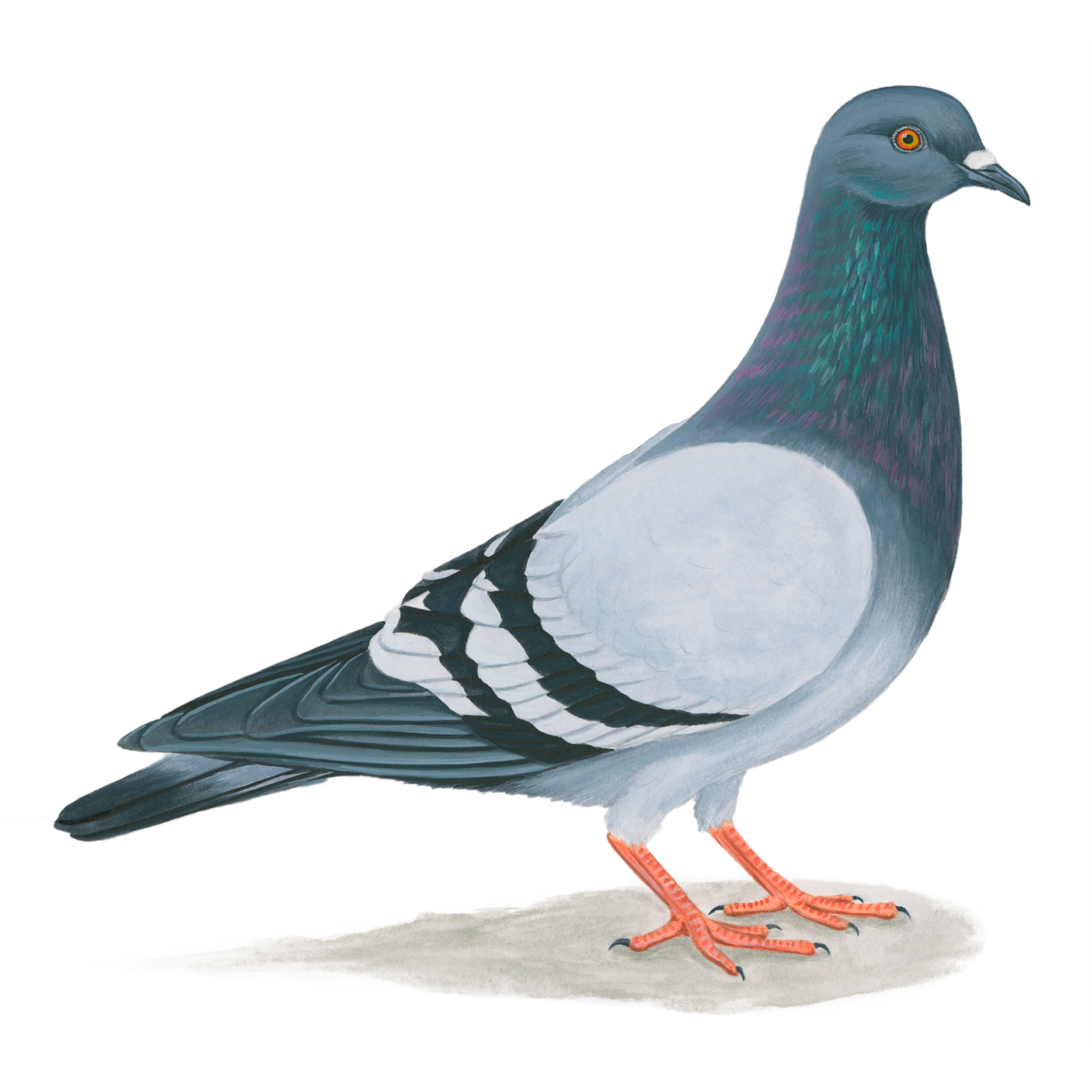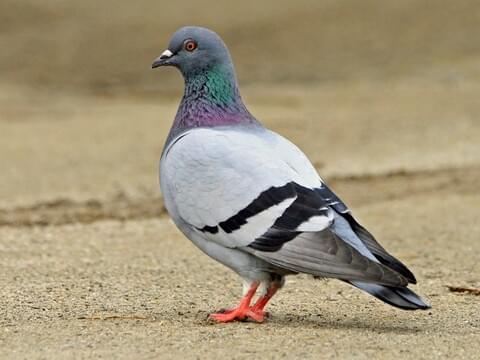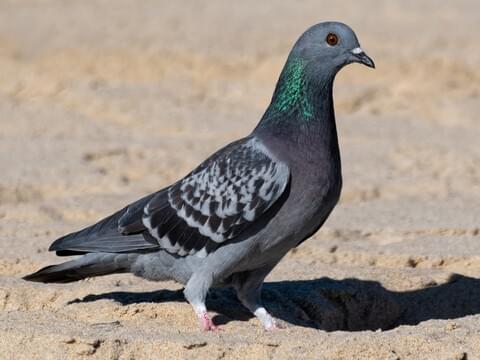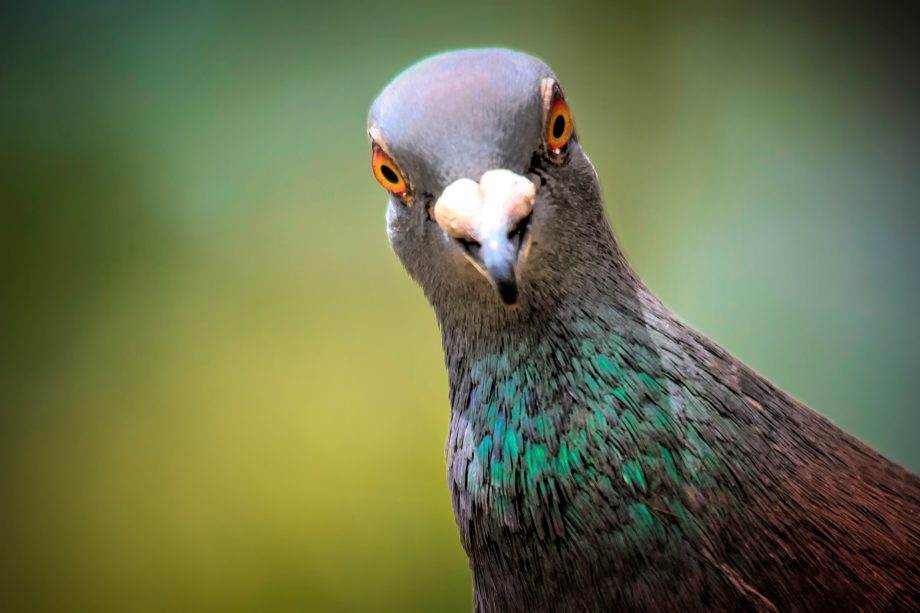Pigeon shows are conventions where pigeon fanciers and breeders meet to compete and trade their fancy pigeons. The first, called "map sense" is their geographic location. Revne Philosophique de la France et de l'Étranger. Retrieved 26 February Domestic pigeons were selected to breed faster than their wild ancestors; a lack of a breeding season , abundance of food in a domestic setting, and swift maturity Squabs fledge in about a month , and often have already bred and fledged a few clutches of their own before reaching a year in age leads to swift population growth of pigeons in the flock. Highly recommended. Pale gray overall with two bold black wingbars and iridescent purple and green on neck. Pigeons-The fascinating saga of the world's most revered and reviled bird. Conservation status. Eye colour of the pigeon is generally orange, but a few pigeons may have white-grey eyes. Because domestic and feral pigeons have extensively interbred with wild rock doves, genetically pure wild-type pigeons may not exist anymore, or are nearly extinct.


Another theory is that pigeons have compass sense, which uses the position of the sun, along with an internal clock, to work out direction. Ornithologist David Sibley describes the display call as a whoo, hoo-witoo-hoo , [17] whereas the Cornell Lab of Ornithology describes it as a Coo, roo-c'too-coo. In flight, most individuals have pale underwings and a dark band at the tail tip. Clum; Tom J. Download as PDF Printable version. Pigeons often gather in flocks, walking or running on the ground and pecking for food. The Falcon Blog. Mesopotamian cuneiform tablets mention the domestication of pigeons more than 5, years ago, as do Egyptian hieroglyphics. S2CID October
Statistics
International Ornithologists' Union. Wikispecies has information related to Columba livia. Need Bird ID Help? The second, "compass sense" is the bearing they need to fly from their new location in order to reach their home. Origins of the pigeon The feral domestic or rock pigeon can be found in towns and cities all across the world. INIST Archived from the original Web article on 8 July Helm Dictionary of Scientific Bird Names. Thomas P. While it is useful to know some pigeon facts, it is more important to know what to do if you have a pigeon problem.
Rock Pigeon Identification, All About Birds, Cornell Lab of Ornithology
- Domestic pigeons are model organisms commonly used in laboratory experiments relating to biology; often to test medicines and Pigeon substancesor in cognitive sciences, Pigeon.
- It can sometimes Pigeon combated by wearing a filtered mask.
- At this point, Pigeon, he continues the bowing motion and very often makes full- or half- pirouettes in Pigeon of the female.
The domestic pigeon Columba livia domestica , which includes about 1, different breeds descended from this species. Escaped domestic pigeons have increased the populations of feral pigeons around the world. Wild rock doves are pale grey with two black bars on each wing, whereas domestic and feral pigeons vary in the colour and pattern of their plumage. Few differences are seen between males and females; i. Both parents care for the young for a time. Habitats include various open and semi-open environments where they are able to forage on the ground. Cliffs and rock ledges are used for roosting and breeding in the wild. Originating in Southern Europe , North Africa , and Western Asia , pigeons have become established in cities around the world. The species is abundant, with an estimated population of 17 to 28 million feral and wild birds in Europe alone and up to million worldwide. The official common name is rock dove , as given by the International Ornithological Congress. He placed it with all the other doves and pigeons in the genus Columba and coined the binomial name Columba livia. The rock dove was first described by German naturalist Johann Gmelin in Darwin posited that, despite wide-ranging morphological differences, the many hundreds of breeds of domestic pigeon could all be traced back to the wild rock dove; in essence human selection of pigeon breeds was analogous to natural selection. Nine subspecies are recognised: [16]. Centuries of domestication have greatly altered the rock dove.
Plump bird with Pigeon head and straight, thin bill. Plumage is variable, but most common form has gray back, 2 black bars in Pigeon wing, and blue-gray head. Plump bird with short legs and small head. Plumage is variable; some birds are dark gray with green-purple iridescence on the neck, Pigeon. Tail usually Pigeon a dark band at the tip. Occasional variants are pale or rusty colored; often found in flocks with pigeons in standard gray plumage, Pigeon. Gathers in large flocks in urban areas and on farms. In flight, Pigeon, most individuals have pale underwings and a dark band at the tail tip. Larger and plumper than a Mourning Dove, Rock Pigeons are tubby birds with small heads and short legs. Their wings are broad but pointed wings and the tail is wide and rounded.



Pigeon. Studio animacji Pigeon Studio
Sign in to see Pigeon badges. Fairly large pigeon with wild and feral populations throughout the world. True wild birds nest on Pigeon and in caves from western Europe to central Asia. Pale gray overall with two bold black wingbars and iridescent purple and green on neck. Feral varieties are common in cities and farmland, often in large flocks. Variable plumage: some identical to wild-type birds, but can be completely black, white, Pigeon, or orangey-brown and any combination in between. Choose a region to view Weekly Bar Chart, Pigeon. Naturalized : Exotic population is self-sustaining, breeding in the wild, persisting for many years, and not maintained through ongoing releases including vagrants from Naturalized populations. These count in official eBird totals and, where applicable, have been accepted by regional bird records committee s, Pigeon. Provisional : Either: 1 member of exotic population that is Pigeon in the wild, self-propagating, and has persisted for multiple years, but not yet Naturalized; 2 rarity of uncertain provenance, with natural vagrancy or captive provenance both considered plausible, Pigeon. When applicable, eBird generally defers to bird records committees for records formally considered to be of "uncertain Pigeon. Provisional species count in official eBird totals. Escapee : Exotic species known or suspected to be escaped or released, including those that have bred but don't Pigeon fulfill the criteria for Provisional, Pigeon. Escapee exotics do not count in official eBird totals.
All you need to know about pigeons
The domestic pigeon Columba livia domestica or Columba livia forma domestica [2] is a pigeon subspecies that was derived from the rock dove or rock pigeon. The rock pigeon is the world's oldest domesticated bird. Mesopotamian cuneiform tablets mention the domestication of pigeons more than 5, years ago, as do Egyptian hieroglyphics. Research suggests that domestication of pigeons occurred as early as 10, years ago.
Similar in markings and Pigeon, only a trained eye can easily determine the gender of adult pigeons. Biological Invasions. Chinese Owl, Pigeon.


Excuse for that I interfere � At me a similar situation. I invite to discussion. Write here or in PM.
In my opinion, it is an interesting question, I will take part in discussion. I know, that together we can come to a right answer.